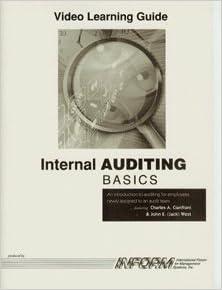Question
Using credit can bind you to a financial obligation to your lender. As such, taking on debt can reduce your financial freedom. In addition, the

 Using credit can bind you to a financial obligation to your lender. As such, taking on debt can reduce your financial freedom. In addition, the money that you spend each month on repaying your debt is money that you could have spent elsewhere on other opportunities. Using credit can reduce or increase your ability to save and invest for the long term. You can also think of credit as a promise to work for the creditor in the future to pay off your debt.
Using credit can bind you to a financial obligation to your lender. As such, taking on debt can reduce your financial freedom. In addition, the money that you spend each month on repaying your debt is money that you could have spent elsewhere on other opportunities. Using credit can reduce or increase your ability to save and invest for the long term. You can also think of credit as a promise to work for the creditor in the future to pay off your debt.
A major advantage or disadvantage of credit is that it can lead to overspending. This is often because credit cards make it easy to purchase items immediately that you would have had to save up for if you had not used credit. And once you are used to carrying debt, it may seem easier to keep buying on credit before you have paid off your existing debt.
Interest is the price you pay for using credit; it is the money that you pay to the lender for borrowing the lenders money. When interest is stated in dollars, interest makes up part of the disposable income, debt-to-equity ratio, debt limit, finance charge, credit history which is the total dollar amount paid to use credit (including interest and other required charges or fees).
The finance charge can be stated either in dollars or as an annual percentage rate (APR). The APR expresses the cost of credit on a semi-monthly, monthly, yearly, daily basis as a percentage rate. For example, a single-payment, one-year loan for $10,000 with a finance charge of $2,100 would have an APR of ___%.
Knowing the APR allows you to make comparisons between credit options. For example, a loan with an APR of 15% will generally cost you more or less than a loan with an APR of 23%, assuming the other fees and charges are the same. Generally you should try to obtain credit with the highest or lowest possible APR.
Although you should strive to keep your debt to a level appropriate for your financial situation, there are several good uses of credit. Which of the following are good uses of credit? Check all that apply. Purchasing an overly expensive or otherwise unable vehicle. Obtaining a mortgage to purchase a home. Obtaining a student loan to finance your education. Taking advantage of free-credit promotions such as a reduced interest rate or a "same-as-cash" plan. Using credit to pay for unexpected expenses such as emergency medical services or automobile repairs. Using a credit card for hotel or car rental reservations. Using a credit card for convenience, but only if the balance is paid in full each month. Using a credit card to protect yourself against seller rip-offs and frauds. Using one credit card to make payments on another credit card. Using a credit card to pay for groceries or gasoline when you cannot afford to pay the balance in full each month. Using a loan to open a business. Although using credit can have benefits if you do it wisely, there are also several downsides to using credit. Credit Reduces Your Financial Flexibility Using credit can bind you to a financial obligation to your lender. As such, taking on debt can reduce your financial freedom. In addition, the money that you spend each month on repaying your debt is money that you could have spent elsewhere on other opportunities. Using credit can your ability to save and invest for the long term. You can also think of credit as a promise to "work for the creditor" in the future to pay off your debt. Credit Can Tempt You to Spend More Money A major of credit is that it can lead to overspending. This is often because credit cards make it easy to purchase items immediately that you would have had to save up for if you had not used credit. And once you are used to carrying debt, it may seem easier to keep buying on credit before you have paid off your existing debt. Interest Costs You Money Interest is the price you pay for using credit; it is the money that you pay to the lender for borrowing the lender's money. When interest is stated in dollars, interest makes up part of the , which is the total dollar amount paid to use credit (including interest and other required charges or fees). The finance charge can be stated either in dollars or as an annual percentage rate (APR). The APR expresses the cost of credit on a basis as a percentage rate. For example, a single-payment, one-year loan for $10,000 with a finance charge of $2,100 would have an APR of %. Knowing the APR allows you to make comparisons between credit options. For example, a loan with an APR of 15% will generally cost you a loan with an APR of 23%, assuming the other fees and charges are the same. Generally you should try to obtain credit with the possible APRStep by Step Solution
There are 3 Steps involved in it
Step: 1

Get Instant Access to Expert-Tailored Solutions
See step-by-step solutions with expert insights and AI powered tools for academic success
Step: 2

Step: 3

Ace Your Homework with AI
Get the answers you need in no time with our AI-driven, step-by-step assistance
Get Started


